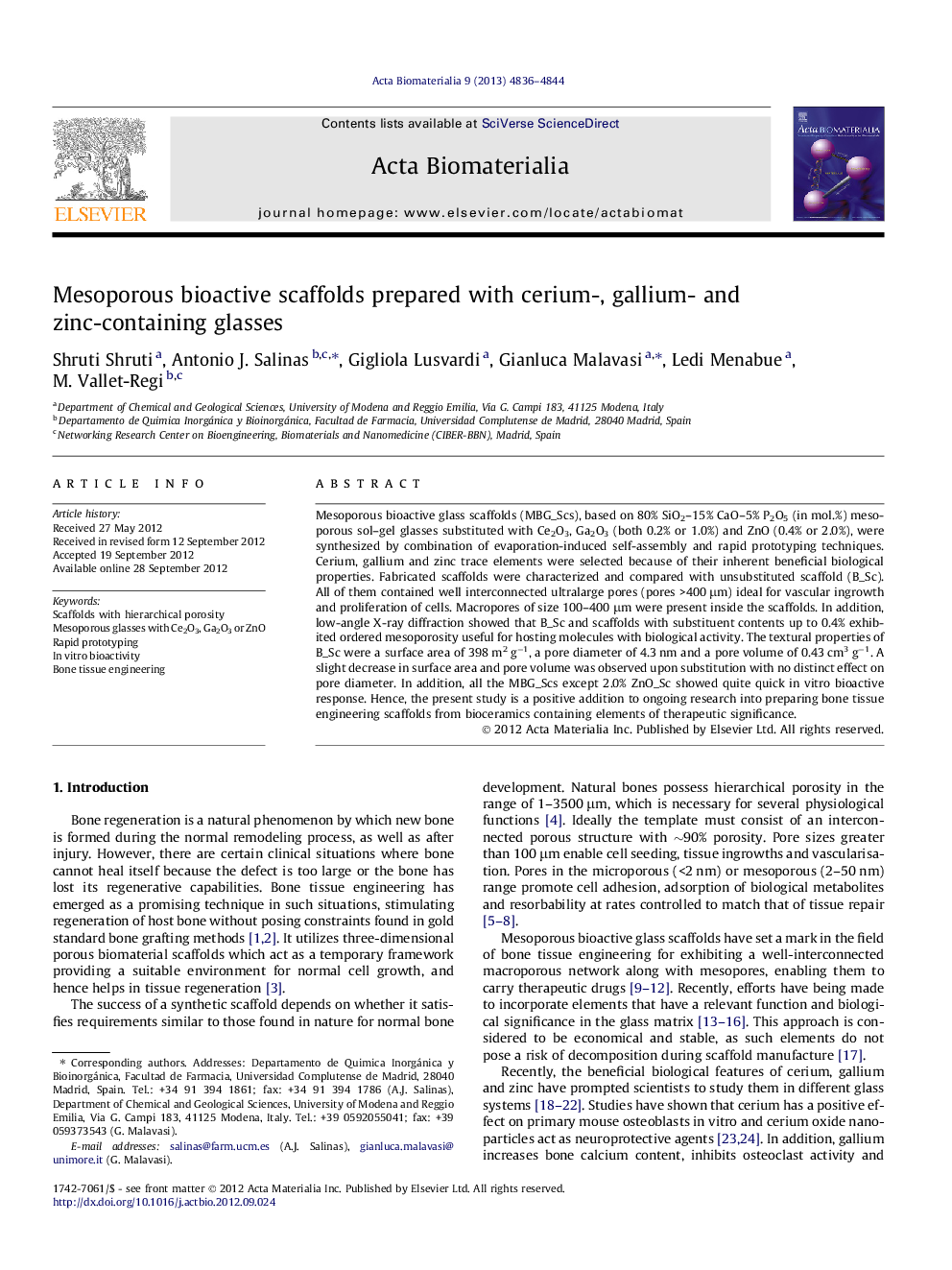| کد مقاله | کد نشریه | سال انتشار | مقاله انگلیسی | نسخه تمام متن |
|---|---|---|---|---|
| 939 | 69 | 2013 | 9 صفحه PDF | دانلود رایگان |

Mesoporous bioactive glass scaffolds (MBG_Scs), based on 80% SiO2–15% CaO–5% P2O5 (in mol.%) mesoporous sol–gel glasses substituted with Ce2O3, Ga2O3 (both 0.2% or 1.0%) and ZnO (0.4% or 2.0%), were synthesized by combination of evaporation-induced self-assembly and rapid prototyping techniques. Cerium, gallium and zinc trace elements were selected because of their inherent beneficial biological properties. Fabricated scaffolds were characterized and compared with unsubstituted scaffold (B_Sc). All of them contained well interconnected ultralarge pores (pores >400 μm) ideal for vascular ingrowth and proliferation of cells. Macropores of size 100–400 μm were present inside the scaffolds. In addition, low-angle X-ray diffraction showed that B_Sc and scaffolds with substituent contents up to 0.4% exhibited ordered mesoporosity useful for hosting molecules with biological activity. The textural properties of B_Sc were a surface area of 398 m2 g−1, a pore diameter of 4.3 nm and a pore volume of 0.43 cm3 g−1. A slight decrease in surface area and pore volume was observed upon substitution with no distinct effect on pore diameter. In addition, all the MBG_Scs except 2.0% ZnO_Sc showed quite quick in vitro bioactive response. Hence, the present study is a positive addition to ongoing research into preparing bone tissue engineering scaffolds from bioceramics containing elements of therapeutic significance.
Mesoporous bioactive glass scaffolds in the SiO2–CaO–P2O5–X systems (X= cerium, gallium or zinc oxides) were synthesized by combination of evaporation induced self assembly and rapid prototyping techniques. Designed scaffolds exhibited high in vitro bioactivity and adequate textural properties as shown by the parent MBGs. In addition, they possess ultra large pores suitable for bone cell growth, proliferation and vascularization with added biological features of substituents.Figure optionsDownload high-quality image (341 K)Download as PowerPoint slide
Journal: Acta Biomaterialia - Volume 9, Issue 1, January 2013, Pages 4836–4844